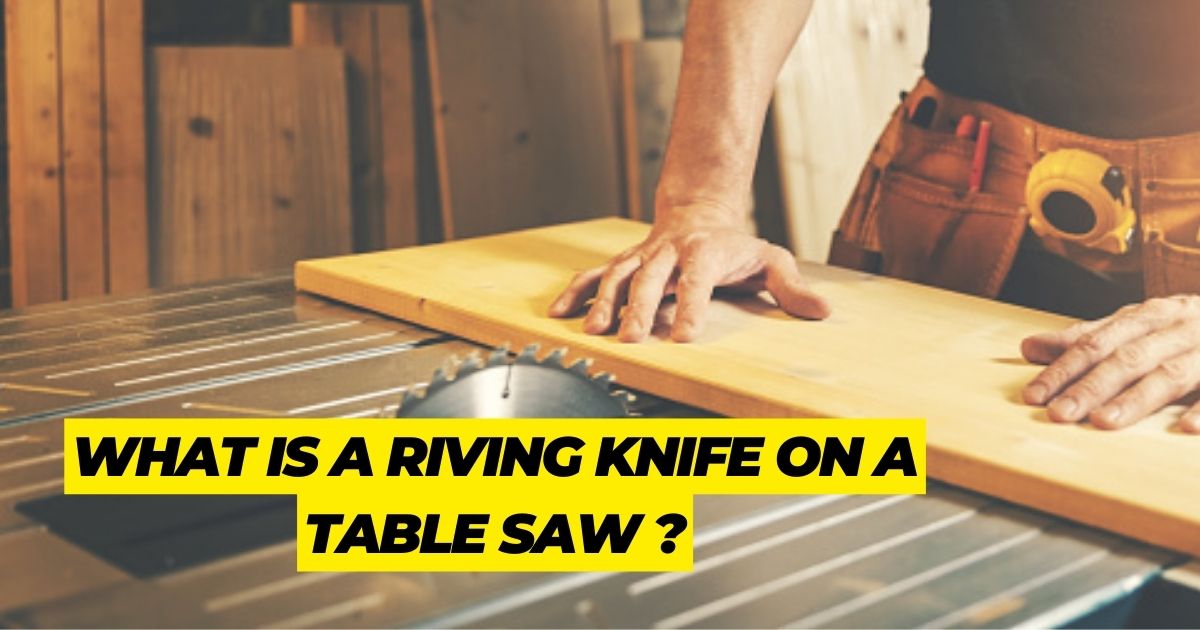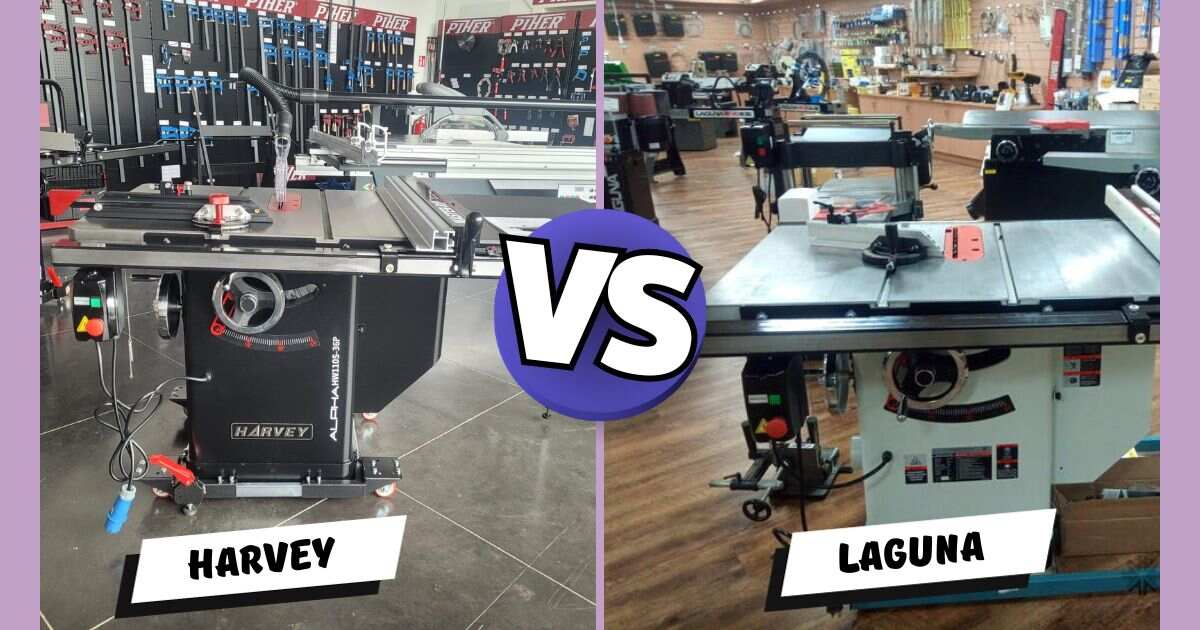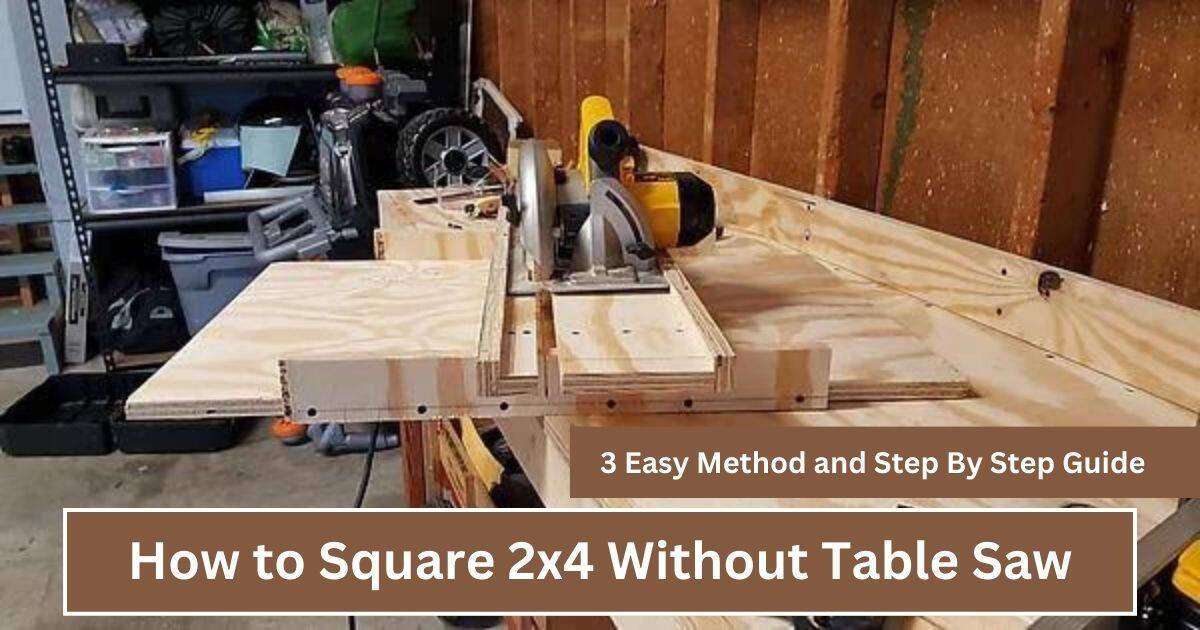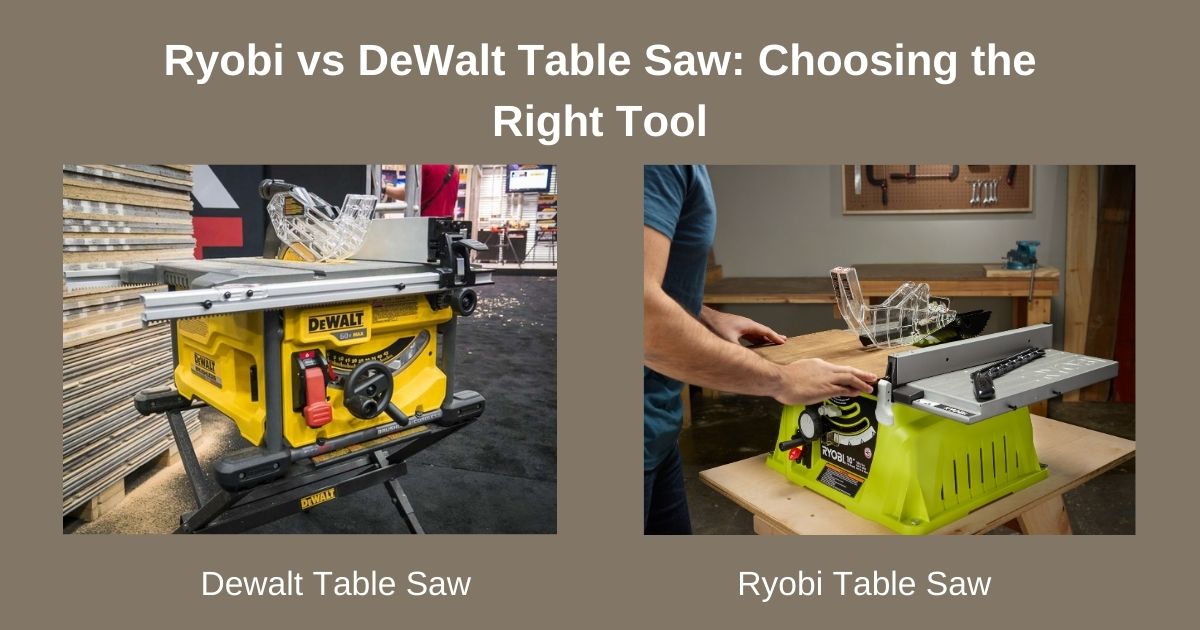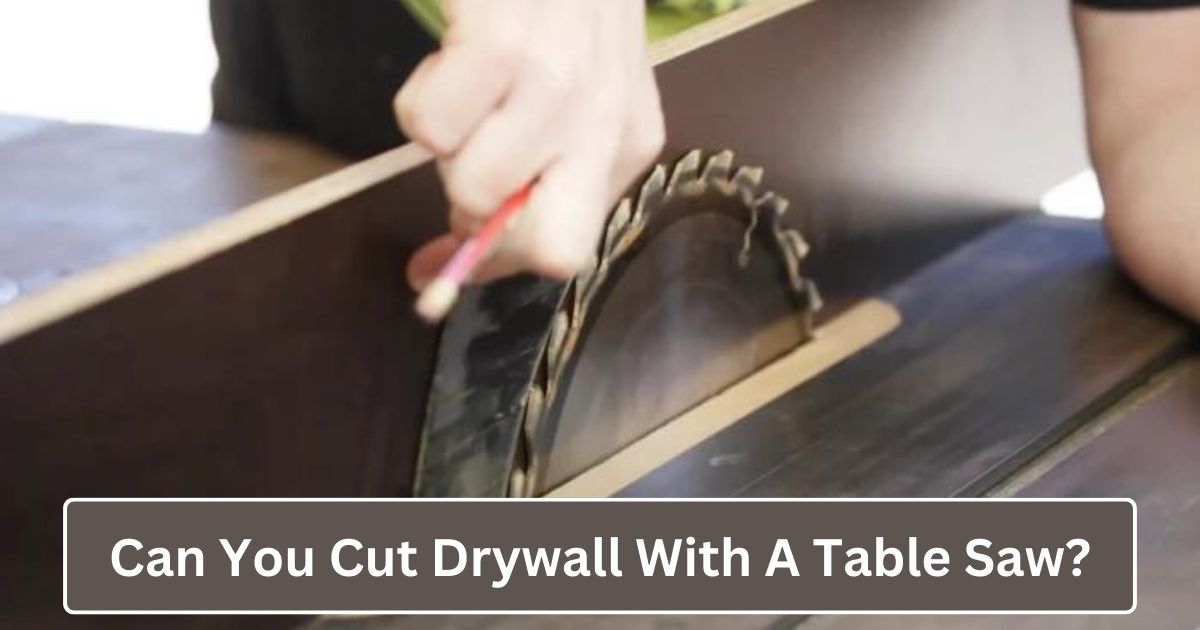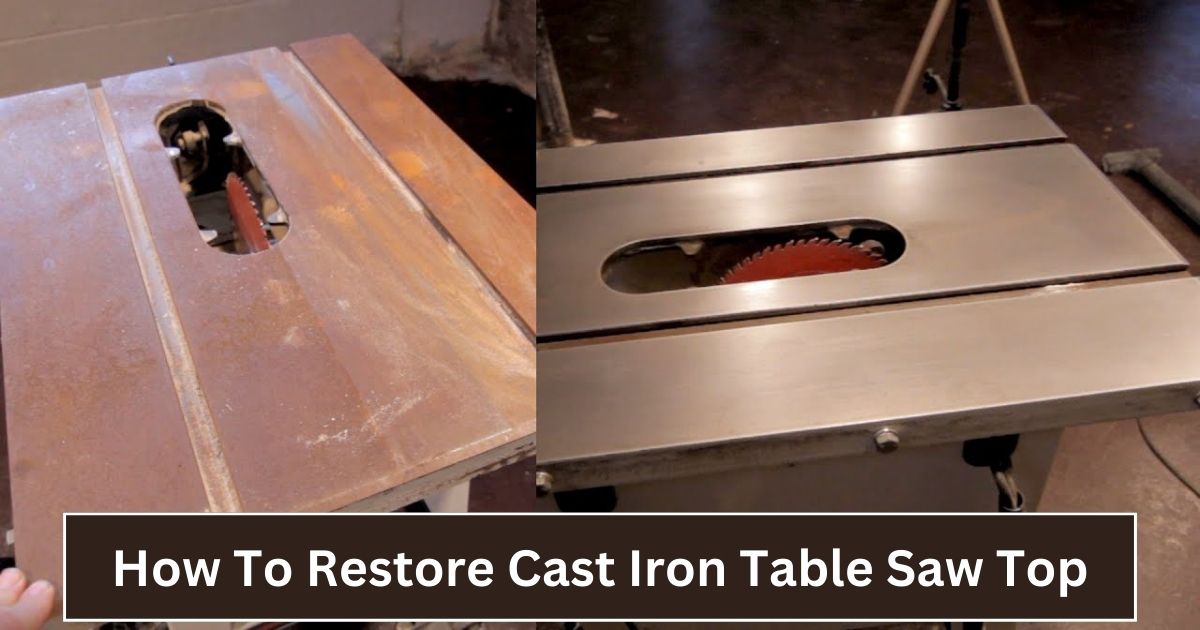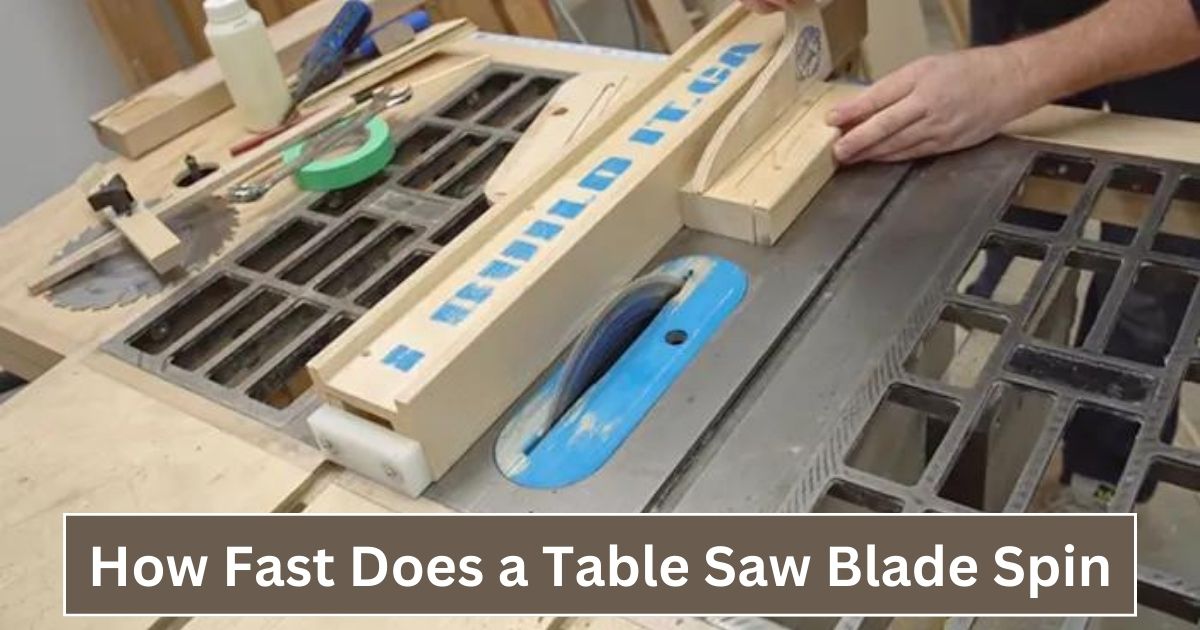We all know that there’s a blade on a table saw. Duh? The person who likes to work with wood at home also knows that when you push the wood through the blade to make a cut, the blade turns toward you.
But just as the branch gets smaller as you cut through it with a tree saw, the wood gets smaller as you cut it with a table saw. But your table saw is much stronger than you are, and the blade will grab the wood, lift it, and kick it back at you. Serious harm can happen, and you or someone you know may have been hurt.
A riving knife will stop this from happening, though. What does a riving knife do on a table saw? But we already have a saw. Why do we also need a knife and what is a riving knife on a table saw?
Why Should You Use a Riveting Knife Alongside a Table Saw?

Kickbacks can be Stopped with a Riving Knife:
When using a table saw, a kickback is one of the most dangerous things that can happen. This happens when the saw blade gets stuck in the cut and then quickly changes direction. This often throws the workpiece back at the person using the saw.
You can avoid this by using a riving knife to make sure the blade doesn’t get stuck. So, a riving knife can’t fully stop kickbacks, but it can reduce how often and how badly they happen. This makes it an important safety tool for anyone who uses a table saw.
Contributes to Tear-out Reduction:
When cutting wood, a riving knife is often recommended as a way to reduce tear-out. Tear-out happens when the wood fibers near the cut edge are torn or ripped out. This makes the edge harder.
Besides stopping this from happening, riving knives also stop the blade from getting stuck in the cut and ripping out the fibers. Also, a riving knife can help keep the workpiece from getting stuck in the saw, which can also cause tear-out.
It Facilitates Making Cleaner Cuts:
When a blade gets stuck in a saw, the cut won’t be as clean as it could be, and the object might even chip or break. Keep in mind that a blade that is sticking can cause the workpiece to chip or break. A riving knife keeps blades from getting stuck together, so cuts are clean and smooth.
It Helps Make your Saw Blade Last Longer:
People don’t often think about the fact that a riving knife can help your saw blades last longer. When a saw blade gets stuck in a cut, it can cause the teeth on the blade to wear out faster than they should.
What is the purpose of a riving knife on a table saw? By using a riving knife, you can keep the blade from getting stuck, which will make it last longer. Also, a riving knife can cut down on or stop kickback, which can hurt the saw and the person using it.
Even though you don’t need a riving knife for all cuts, it can be a useful tool for keeping your saw blade from getting damaged and making sure it lasts a long time.
It can Help you Cut with More Accuracy:
One of the most important things to do when using a saw is to make clean, straight cuts. This can be hard to do if the saw blade gets stuck in the cut, which can make the cut not straight.
It can also cause damage to both the saw and the person using it. A riving knife keeps the blade from getting stuck, which makes it easier to make clean cuts.
It is Safer than Using a Splitter:
A splitter is a device that goes on the back of a saw blade and keeps the blade from getting stuck in the cut, which can cause a kickback. But splitters can also be dangerous because they can catch on clothing or skin and cause major injuries.
Riving knives are safer because the back of the blade does not stick out, so they are less likely to get caught on something.
Can a Table Saw be Utilized Without a Riving Knife?

A table saw has a tool called a riving knife that is used with it. Its job is to help stop kickback, which can happen when the blade of the table saw hits the subject. Kickback is dangerous and can hurt both the saw and the thing you are cutting.
A riving knife helps keep the table saw blades from making touch with the workpiece, which can cause kickback. But some people prefer to use a table saw that doesn’t have a riving knife. This is possible, but it’s not a good idea because it makes kickbacks more likely.
Also, it can be harder to make exact cuts with a table saw that doesn’t have a riving knife. Because of these things, you should always use a table saw with a riving knife.
How are a riveting Knife and a Splitter Different?
A riving knife is better than a splitter because the space between the handle and the blade stays the same. Both a riving knife and a splitter are made to keep the kerf open as the wood goes through the blade.
However, a riving knife is always kept at the same distance from the blade, usually no more than 3/8″, while a splitter can sometimes be more than an inch or two away. This is because of how a splitter is connected to an arbor.
As a safety precaution, and as we’ve already said, the riving knife will rise and fall with the blade as you move it, and the set distance will stay the same. Since the splitter does not move, the space between it and the blade does not stay the same.
Is it Better to use a Riving Knife than a Splitter?
Most table saws come with a riving knife, but you can buy a splitter separately. Which one is better? Even though both tools are useful, many woodworkers prefer to use a riving knife because it protects them better from kickback.
Also, a riving knife can be moved to different places, which can help when making different kinds of cuts. For example, to stop chip-out when making a dado cut, the riving knife can be moved to the outside of the blade.
Some woodworkers also think that a riving knife cuts better because the wood doesn’t get stuck on the back of the blade. But splitters do have their good points.
They are less likely to break or come loose than riving knives, and they can help keep the kerf in place when making certain cuts. In the end, it’s up to you whether you want to use a riving knife or a splitter.
If you have to choose between the two, choose the riving knife for extra safety. Today’s table saws make that choice for you because they have to have riving knives, but they don’t have to have splitters.
Should the Riving Knife be Higher than the Blade of the Table Saw?
Different people have different ideas about how to install riving knife on table saw. Some woodworkers think the knife should be set higher than the blade, while others say it should be even with or slightly below the blade. So, which setting is right?
The answer could depend on how much you cut. Some woodworkers find that a higher riving knife makes it easier to stop kickback when making a rip cut. When making a crosscut, on the other hand, a lower setting may be better because it can help keep the piece from getting stuck on the blade.
When it comes to setting the riving knife for the table saw, there is no right or wrong answer. Depending on the type of cut you’re making and your own tastes, the best setting may be different.
The Riving Knife could be Thinner than the Blade:

The riving knife is usually made of metal and is placed behind the blade. It is placed so that when you look at the blade from the front, you can just barely see it. Some people have suggested making the riving knife smaller than it is now, which would make it easier to see the blade.
But this is not a good idea for more than one reason. First of all, a smaller riving knife isn’t as good at stopping kickback. Aside from that, it would be more likely to touch the blade, which could damage both the knife and the blade.
Also, a thinner riving knife would be harder to see, which would make it more likely that someone would touch it by mistake. Because of these things, it is best to keep the riving knife the way it is now.
When to Pull Out the Rivet Knife:
When you watch TV shows about crafting, the riving knife, anti-kickback pawls, and blade guards are often taken off. This is done so that the steps are easier to see on TV, but it does a bit of a harm to new woodworkers by making it seem like it’s okay to take off these safety features.
But there are times when you have to take the riving knife off or when it would be wrong to do so. When cutting a dado or rabbet with a stacked dado blade is a good example. Since this kind of blade doesn’t make a cut all the way through, a riving knife wouldn’t do anything.
In fact, it would get in the way and make it impossible to finish the cut. Also, most table saws use blades with a diameter of 10 inches, but most stacked dado blades have a diameter of 8 inches.
This means that there would be at least an inch of space between the edge of the stacked dado blade and the riving knife, which would make the riving knife pretty much useless.
When making standard rip cuts and crosscuts with your table saw, however, you should almost always use the riving knife. It doesn’t get in the way, and when used with other safety features, it makes it much safer to use your table saw.
Bottom Line: What is a Riving Knife on a Table Saw?
The use of a riving knife, an essential piece of safety equipment that helps prevent kickback, is recommended. When the blade snags on the wood, the user experiences kickback, which is when the blade is propelled back at them.
Because of the potential severity of the consequences, it is critical to have a riving knife available as a preventative measure. It is highly recommended that you get a riving knife for your table saw since it not only helps to maintain a smooth and even cut, but it also helps to keep the cut smooth and even. Thank you very much for reading.
FAQs about What is a Riving Knife on a Table Saw?
What is a Riving Knife on a Table Saw?
A riving knife is a safety device installed on a table saw, circular saw, or radial arm saw used for woodworking. Attached to the saw’s arbor, it is fixed relative to the blade and moves with it as blade depth is adjusted.
What is a Riving Knife Used For?
A riving knife is a tool that is used to stop a table saw from kicking back. A riving knife rides in the kerf behind the blade as it cuts. This keeps the cut clean and straight. It also makes the back of the item less likely to tear.
Do i Need a Riving Knife on my Table Saw
When making standard rip cuts and crosscuts with your table saw, however, you should almost always use the riving knife. It doesn’t get in the way, and when used with other safety features, it makes it much safer to use your table saw.
What’s the Benefit of Using a Riving Knife?
A riving knife is better than a splitter in the following ways: It doesn’t have to be taken off the saw when making a cross-cut or a blind cut, since it doesn’t go above the top of the saw blade. If the user doesn’t take it off, they can’t forget to put it back on.
Related Posts:
